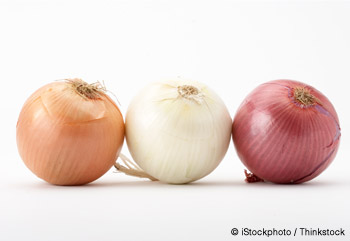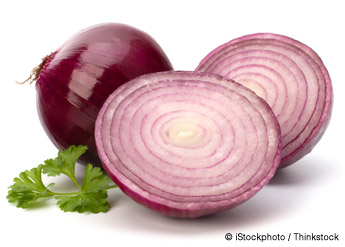This article is courtesy of fitday.com
The 5 Worst Processed Foods
Due to fast-paced, busy and often stressful lifestyles, many people are relying on convenience foods more than ever. However, even though convenient, you can't overlook the fact that processed foods are detrimental to your health. Let's take a look at some of the worst processed foods around.

1. Frozen Meals
Ready-to-eat frozen dinners have ingredient lists almost longer than the box on which they're printed. Worse yet, most of those ingredients can't even be pronounced, let alone recognized. Convenient microwaveable meals are loaded with fat, sodium, preservatives and artificial ingredients. Additionally, they're often lacking fruits or vegetables--or have such a small amount it doesn't even constitute a serving of either.
2. Refined Grains
Refined grains have many beneficial nutrients removed during processing, including vitamins, minerals, antioxidants and fiber (found in the original whole grains). Limit or avoid refined grains such as white bread, white rice, plain white pasta, regular flour tortillas and snack foods made from refined grains (cereals, crackers, sugary cakes, donuts, cookies, etc.). Eating more refined grains can elevate triglycerides and increase inflammation in your body.
3. Stick Margarine
People often think those sticks of margarine are a healthy choice when compared to butter. Not so. In fact, while both stick margarine and butter contain heart-clogging saturated fat, stick margarine is more harmful to your health because it also contains trans fat. Trans fat not only raises your bad cholesterol (LDL), it also lowers your good cholesterol (HDL) and has been linked to a greater risk of stroke, heart disease and type 2 diabetes.
4. Processed Meats
Research has demonstrated a link between the consumption of processed meats and a higher chance of developing cardiovascular disease and cancer of the colon, rectum and pancreas. Eating processed meats is also linked with a higher chance of premature death. Most processed meats contain sodium nitrites or nitrates, which can turn into cancerous nitrosamines in your body.
But the term "processed meats" gets thrown around quite often, so let's clarify what falls into this category. If a meat has had anything more done to it than being cut or ground up, then it is considered a processed meat. Luncheon or sandwich meats (most of what you buy at the deli or pre-packaged), smoked or cured meats (bacon, we're looking at you) and sausage or meats that are found in casings are processed meats.
Of course, an occasional stadium hot dog, bratwurst or slice of pepperoni pizzaenjoyed at a summer baseball game won't kill you, but it certainly shouldn't be something you eat on a regular basis.
5. Soda
Of course, regular soda has gotten a bad rep (rightfully so) for providing a huge amount of empty calories, but it might do more harm than just causing weight gain. Even downing two regular sodas in one week almost doubles your risk of developing pancreatic cancer. Yikes! Increase that consumption to two-and-a-half sugar-laden sodas per day and you'll significantly up your chances of getting diabetes or dying from heart disease.
How to Avoid Processed Foods
The easiest way to cut back on the amount of processed foods you consume is to shop the perimeter of the grocery store, picking out whole foods and foods with few to no added artificial ingredients. Fill your grocery cart with a lot of whole fruits and vegetables (fresh or frozen, no sauce added); unprocessed cuts of meat, poultry or seafood; nuts; seeds; whole-grains and low-fat dairy. A good rule of thumb: if a product contains an ingredient you can't pronounce or don't recognize--don't eat it.

1. Frozen Meals
Ready-to-eat frozen dinners have ingredient lists almost longer than the box on which they're printed. Worse yet, most of those ingredients can't even be pronounced, let alone recognized. Convenient microwaveable meals are loaded with fat, sodium, preservatives and artificial ingredients. Additionally, they're often lacking fruits or vegetables--or have such a small amount it doesn't even constitute a serving of either.
2. Refined Grains
Refined grains have many beneficial nutrients removed during processing, including vitamins, minerals, antioxidants and fiber (found in the original whole grains). Limit or avoid refined grains such as white bread, white rice, plain white pasta, regular flour tortillas and snack foods made from refined grains (cereals, crackers, sugary cakes, donuts, cookies, etc.). Eating more refined grains can elevate triglycerides and increase inflammation in your body.
3. Stick Margarine
People often think those sticks of margarine are a healthy choice when compared to butter. Not so. In fact, while both stick margarine and butter contain heart-clogging saturated fat, stick margarine is more harmful to your health because it also contains trans fat. Trans fat not only raises your bad cholesterol (LDL), it also lowers your good cholesterol (HDL) and has been linked to a greater risk of stroke, heart disease and type 2 diabetes.
4. Processed Meats
Research has demonstrated a link between the consumption of processed meats and a higher chance of developing cardiovascular disease and cancer of the colon, rectum and pancreas. Eating processed meats is also linked with a higher chance of premature death. Most processed meats contain sodium nitrites or nitrates, which can turn into cancerous nitrosamines in your body.
But the term "processed meats" gets thrown around quite often, so let's clarify what falls into this category. If a meat has had anything more done to it than being cut or ground up, then it is considered a processed meat. Luncheon or sandwich meats (most of what you buy at the deli or pre-packaged), smoked or cured meats (bacon, we're looking at you) and sausage or meats that are found in casings are processed meats.
Of course, an occasional stadium hot dog, bratwurst or slice of pepperoni pizzaenjoyed at a summer baseball game won't kill you, but it certainly shouldn't be something you eat on a regular basis.
5. Soda
Of course, regular soda has gotten a bad rep (rightfully so) for providing a huge amount of empty calories, but it might do more harm than just causing weight gain. Even downing two regular sodas in one week almost doubles your risk of developing pancreatic cancer. Yikes! Increase that consumption to two-and-a-half sugar-laden sodas per day and you'll significantly up your chances of getting diabetes or dying from heart disease.
How to Avoid Processed Foods
The easiest way to cut back on the amount of processed foods you consume is to shop the perimeter of the grocery store, picking out whole foods and foods with few to no added artificial ingredients. Fill your grocery cart with a lot of whole fruits and vegetables (fresh or frozen, no sauce added); unprocessed cuts of meat, poultry or seafood; nuts; seeds; whole-grains and low-fat dairy. A good rule of thumb: if a product contains an ingredient you can't pronounce or don't recognize--don't eat it.


